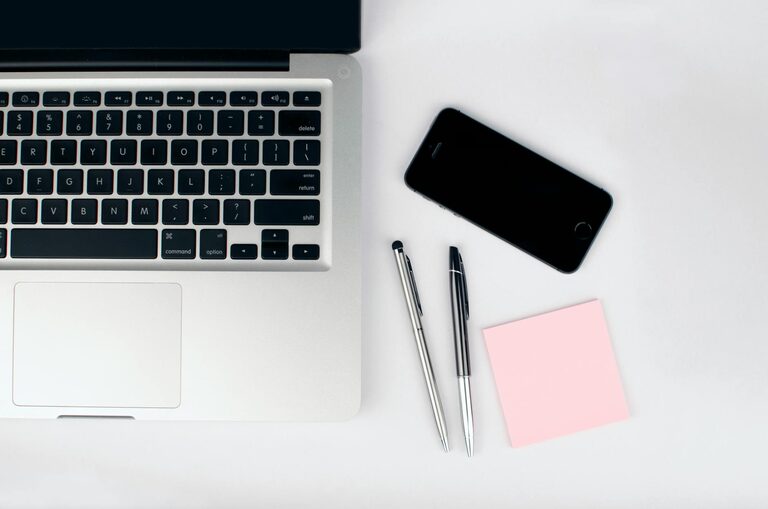In today’s world, our digital devices are an essential part of daily life. From email inboxes to cloud storage, social media accounts to smartphone photos, digital clutter can accumulate quickly and create distractions, stress, and inefficiency. Just like tidying a physical space, decluttering your digital life can help you focus, find things faster, and enjoy a calmer online environment.
If your digital workspace feels overwhelming, this guide will walk you through practical steps to regain control and maintain a cleaner, more organized digital life.
Why Declutter Your Digital Life?
Before diving into how to declutter, it’s helpful to understand why it matters:
– Reduce Stress and Overwhelm: A messy digital space can cause anxiety and decision fatigue.
– Boost Productivity: Finding files, emails, and apps quickly saves time and lets you focus.
– Improve Device Performance: Too much clutter (like files and apps) can slow devices.
– Protect Privacy and Security: Removing unnecessary data reduces risk of breaches.
– Create Healthy Tech Habits: Encourages mindful usage and balance with digital tools.
Step 1: Clean Up Your Email Inbox
Email inboxes are one of the biggest digital clutter sources. Here’s how to get yours under control:
Unsubscribe and Delete Unnecessary Emails
– Use tools or services (like Unroll.me or built-in Gmail features) to unsubscribe from newsletters or promotions you no longer read.
– Delete old emails you don’t need, focusing on large attachments or outdated information.
Use Folders and Labels
– Create folders or labels for important categories like Work, Personal, Receipts, and To-Do.
– Move relevant emails into these folders for easier access.
Set Up Filters and Rules
– Automate organization by setting up filters that sort incoming emails automatically.
– Mark newsletters, notifications, or priority contacts distinctly.
Aim for Inbox Zero
– Regularly review and clear emails to keep your inbox manageable.
– Schedule a few minutes each day or week as an “email clean-up” time.
Step 2: Organize Your Files and Folders
Your computer and cloud drives can get cluttered with duplicate files and random downloads. Here’s how to tidy up:
Delete or Archive Old Files
– Go through Documents, Downloads, and Desktop folders and delete what is no longer needed.
– Archive infrequently used but important files onto a separate external hard drive or cloud folder.
Create a Consistent Folder Structure
– Group files by project, category, or date.
– Use clear, descriptive folder names to help find items quickly.
Use Naming Conventions
– Rename files with meaningful titles that include dates or version numbers.
– Avoid vague names like “Document1” or “Final2.”
Remove Duplicate Files
– Use software tools like Duplicate Cleaner or Gemini to find and remove repeated files.
Step 3: Declutter Your Apps and Software
Too many apps on your phone or computer can slow down performance and make finding the right tool frustrating.
Review Installed Apps Regularly
– Delete apps you rarely or never use.
– Consider uninstalling software that duplicates functionality.
Organize Apps into Folders
– Group similar apps (e.g., productivity, social media, games) into folders.
– Place frequently used apps on the home screen or taskbar for quick access.
Check for Updates and Security Patches
– Keeping apps up to date improves security and performance.
Step 4: Manage Your Photos and Videos
Digital photos and videos tend to pile up quickly across devices and cloud services.
Delete Unnecessary or Duplicate Photos
– Use built-in tools or apps like Google Photos’ duplicate detector.
– Remove blurry, poorly taken, or unwanted images.
Organize Albums and Tags
– Sort photos into albums by trip, event, or date.
– Use tags or keywords to make searching easier.
Back Up Your Media
– Ensure you have copies stored safely in the cloud or on an external drive.
Step 5: Streamline Your Social Media Presence
Social media can be a source of digital clutter, with countless accounts and notifications.
Review Your Accounts
– Close any old or unused social media accounts.
– Adjust privacy settings if needed.
Manage Notifications
– Turn off non-essential notifications to reduce distractions.
Curate Your Feed
– Unfollow accounts that no longer interest you.
– Follow feeds that inspire, educate, or bring joy.
Step 6: Secure and Backup Your Digital Data
Decluttering includes managing the safety of your digital life.
Use Strong Passwords and a Password Manager
– Create unique passwords for each account.
– Use a trusted password manager to store them securely.
Backup Regularly
– Use automated backups for important files and photos.
– Consider multiple backup options, like cloud and physical hard drives.
Clear Browser Data and Cache
– Regularly clear cookies and cached data to speed up browsing and protect privacy.
Step 7: Maintain Your Digital Declutter Routine
Once you’ve decluttered, maintaining that cleanliness is key.
Schedule Regular Check-Ins
– Set reminders weekly or monthly to tidy emails, files, and apps.
Practice Mindful Downloading
– Before downloading files or apps, ask if you really need them.
Keep a Minimal Digital Workspace
– Limit desktop icons and browser tabs.
– Use productivity tools deliberately.
—
Final Thoughts
Decluttering your digital life is a rewarding process that can save time, reduce stress, and improve your digital habits. By tackling areas like email, files, apps, photos, and social media—and building healthy routines—you create a clearer, more efficient digital world that supports your goals and wellbeing.
Take small steps regularly, and soon you’ll enjoy the benefits of a streamlined, organized digital life!

